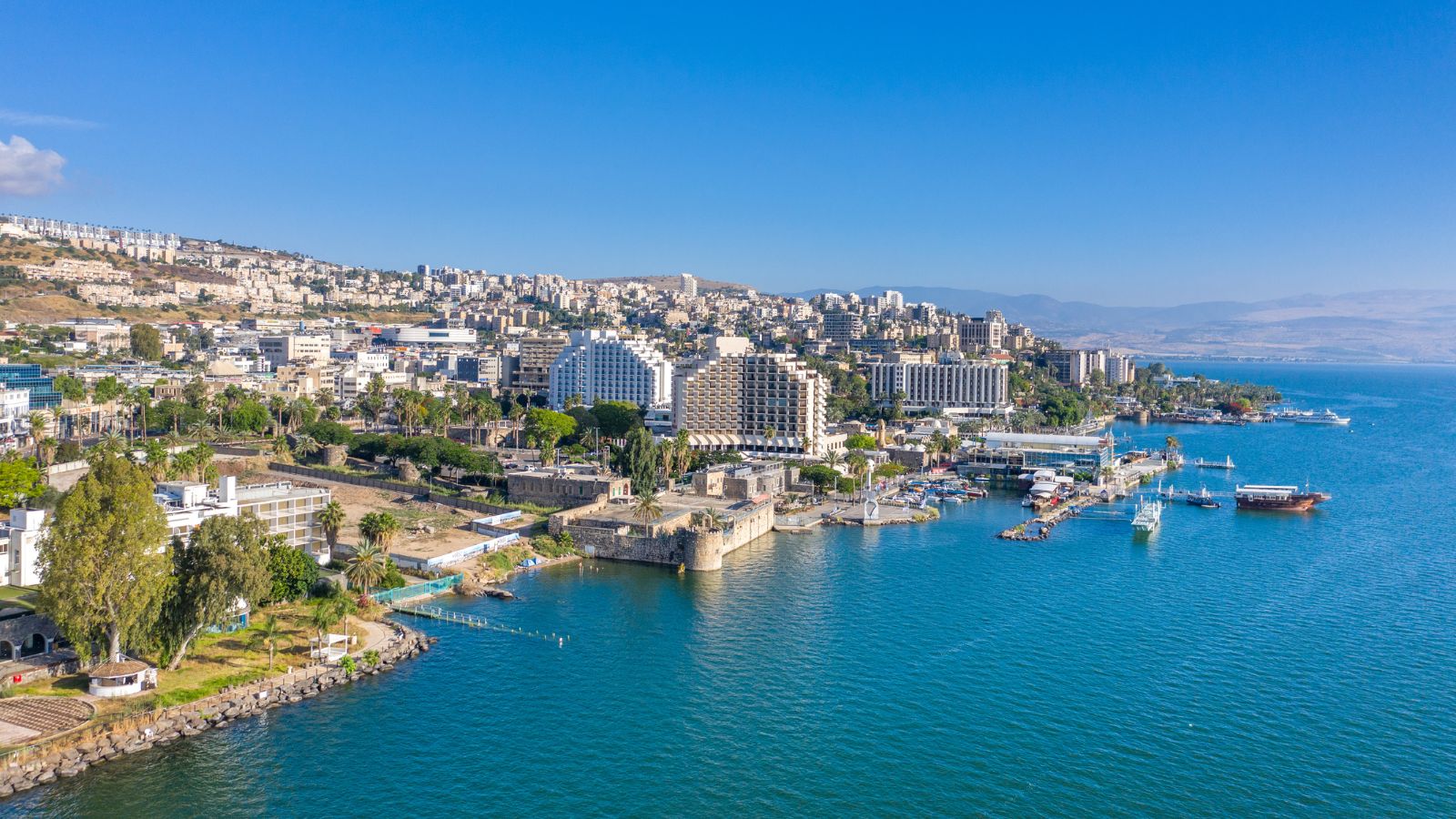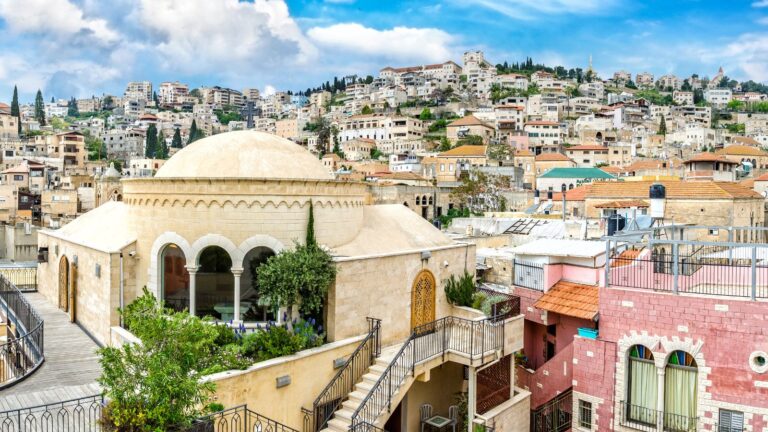Many villages and cities mentioned in the Bible continue to thrive today across the world, each rich with history and cultural significance. These historical sites, most of which can be found in the Middle East, offer visitors a chance to explore their biblical connections while enjoying their unique architectural heritage and stunning natural surroundings. This article provides a look at some of these enduring locations that draw travelers from around the world.
Bethlehem

Brittanica explains that in the “Gospels (Matthew 2; Luke 2), Bethlehem was the site of the Nativity of Jesus Christ.” Today, the Palestinian city has a population of 25,000 and attracts Christian tourists during the Christmas season, embarking on a pilgrimage to the Church of the Nativity.
Jordan River

This Middle-Eastern river is the biblical site of Jesus’s baptism by John the Baptist. Modern-day pilgrims can visit the 156-mile river to get baptized, renew their baptismal vows, and explore its natural beauty and wildlife.
Hebron

In the Bible, Hebron is the burial place of the patriarchs and matriarchs in the Cave of the Patriarchs. Today, it is a Palestinian city in the southern West Bank, divided into two sections controlled by the Palestinian National Authority and Israel.
Capernaum

Britannica notes that this ancient Israeli village “was Jesus’s second home,” where he performed miracles and “chose his disciples Peter, Andrew, and Matthew.” Today, the archaeological remains of the area include a synagogue and a Roman oil press.
Bethlehem of Galilee

Not to be confused with Bethlehem, Bethlehem of Galilee is a northern Israeli moshav located at the ancient site of Bethlehem of Zebulun. Today, tourists can visit the village, explore its architectural and agricultural heritage, and stay in traditional accommodations.
Mount of Olives

The Mount of Olives was a key site in Jesus’s life, the site of His ascension to heaven. Today, the East Jerusalem mountain ridge is adjacent to Jerusalem’s Old City, and tourists can visit the Garden of Gethsemane and the Church of All Nations and enjoy panoramic views of Jerusalem from the Mount.
Samaria

Samaria was once the capital of the Kingdom of Israel from 880 BCE to 720 BCE. It is prominently featured in the parable of the Good Samaritan and was first excavated in 1908. Today, tourists can visit the unearthed ancient Roman columns.
Megiddo

Holy Land Site writes that Megiddo is the Israeli site of a fort for King Solomon and the prophesied location of an end-times battle. Today, the ancient site has been excavated, is recognized as a World Heritage Site, and is protected as Megiddo National Park.
Caesarea

Caesarea is an ancient port city in Palestine on the Mediterranean coast. Britannica writes, “In the New Testament, it is mentioned in Acts in connection with Peter, Philip the Apostle, and, especially, Paul, who was imprisoned there before being sent to Rome for trial.” Excavations starting in 1950 uncovered a Roman amphitheater, a temple, and a hippodrome that seated 20,000.
Bethany

In the Gospel of John, Bethany is mentioned as the home of Lazarus, whom Jesus raised from the dead. Today, the West Bank town is home to over 20,000 inhabitants and the tomb of Lazarus, a place of pilgrimage.
Sea of Galilee

The Sea of Galilee is the world’s lowest freshwater lake, offering visitors a chance to participate in the annual Kinneret Crossing, an open-water swim race. Associates for Biblical Research notes that “Jesus’s earthly ministry centered around the Sea of Galilee” and that He “spent most of the three years of His ministry along the shore” of the lake.
Patmos

This Greek island in the Aegean Sea is the writing place of the Book of Revelations, written by John of Patmos. Visitors can explore the Cave of the Apocalypse and the Monastery of Saint John the Theologian.
Jerusalem

Jerusalem is home to “Temple Mount, the magnificent edifice that has served the faithful as a symbol of God’s glory for 3,000 years and remains the crossroads of the three great monotheistic religions” of Judaism, Islam, and Christianity, says Smithsonian Magazine. Today, tourists can visit the city to see key sites like the Western Wall and the Church of the Holy Sepulchre.
Jericho

This West Bank town has been continuously lived in since around 9000 BCE and is known for its biblical history as the first city conquered by the Israelites in the Land of Canaan. Jericho’s attractions today include the Mount of Temptation and Qasr al-Yahud, the location of Jesus’s baptism.
Mount Sinai

According to the Bible, Torah, and Quran, Mount Sinai is the site where Moses received the Ten Commandments. Today, a mountain in Egypt’s Sinai Peninsula claims to be the same site. Tourists can visit St. Catherine’s Monastery at the base, one of the oldest working Christian monasteries in the world.
Nazareth

Known as the “Arab Capital of Israel,” Nazareth is significant in the Bible as being the childhood home of Jesus. Time Out explains, “Nazareth is especially known for its Christmas Market and is an incredibly popular destination around Christmas time.” Key attractions for tourists include the Basilica of the Annunciation and Mary’s Well.
Emmaus

In the Gospel of Luke, Jesus appeared before two of His disciples on the road to Emmaus after His death and resurrection. Historians are still determining its exact location, but Imwas and Al-Qubeiba in the West Bank are historical candidates.

